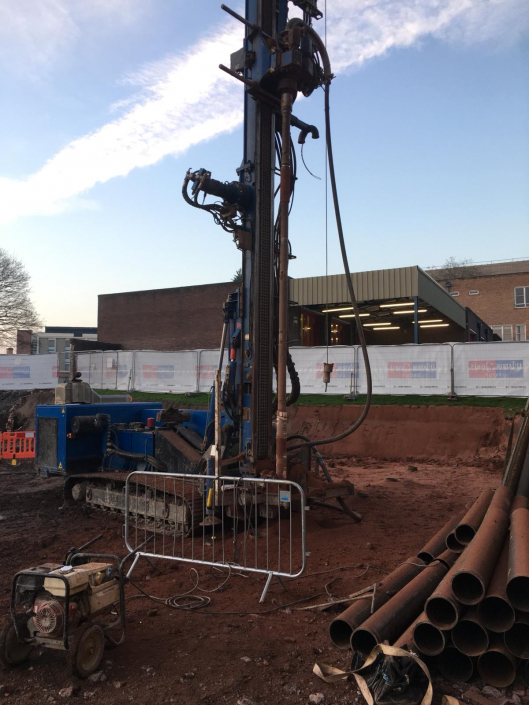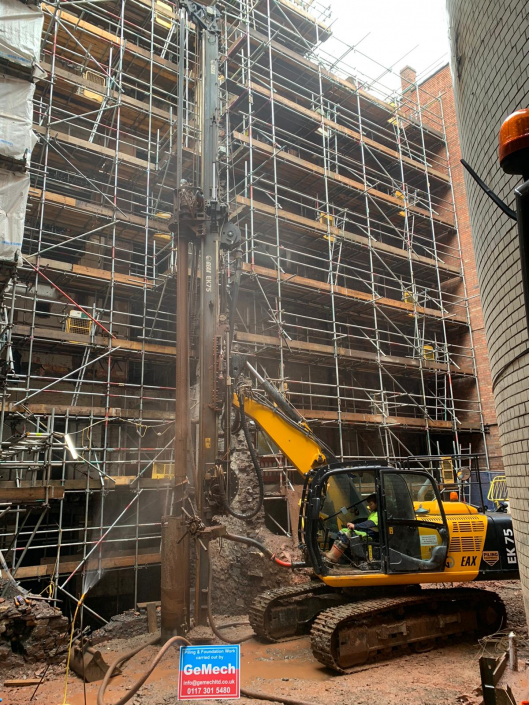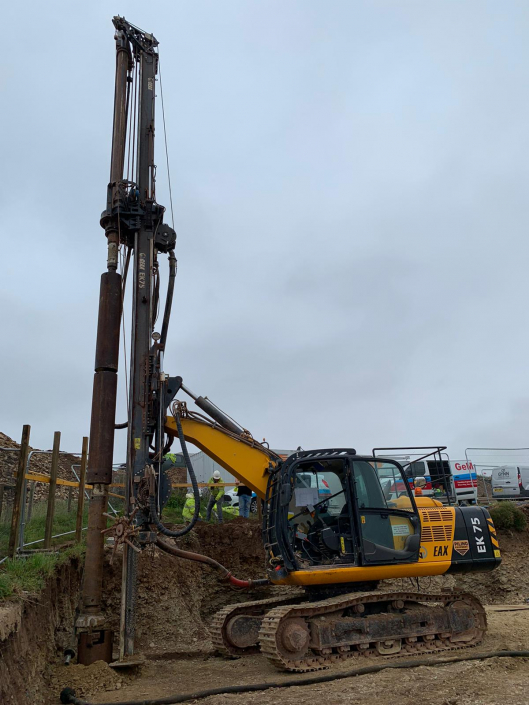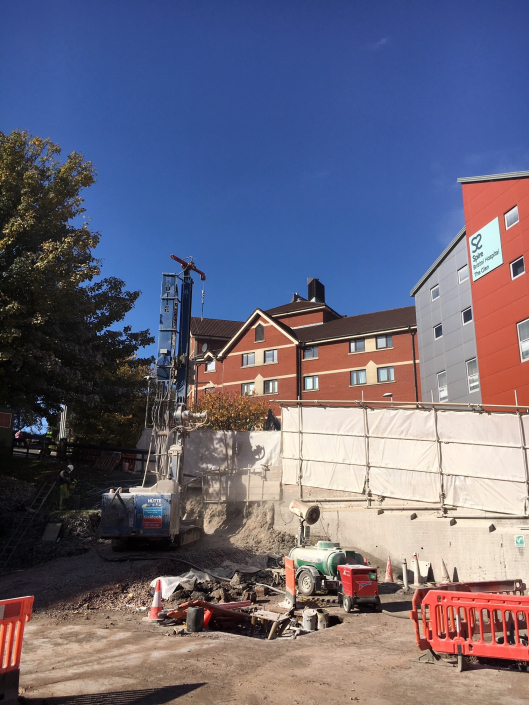Screw piles consist of prefabricated flighted steel starter section, drilled using an excavator and attachment to a predetermined design depth, or to a maximum torque value.
Extension pieces are a sequentially added as the pile is progressed to depth, with each successive section securely bolted to the previous.
Where required, termination brackets can be provided to facilitate connection of the screw piles into the structural slab or ground beams.
The Screw Piling Process
From start to finish, what is the process of constructing screw piles?
Step 1 – Prior to the equipment arriving to site the client surveys the area for services, prepares a suitable working platform at top of foundation level, and drives a numbered pin into the working platform at each pile position.
Step 2 – A health and safety briefing will take place; the equipment will be prepared for work and moved to the first pile position.
Step 3 – A flight starter section will be positioned over the first point and securely connected to the screw piling attachment. Verticality of the starter section will be checked before it is progressed to depth.
Step 4 – The starter section is left approximately 0.3m above ground level, allowing the next follower section to be added, and the two securely bolted together. This process is repeated until all casings are driven to the pre-determined design depth or maximum torque value.
Step 5 – Where required, the pile can trimmed – by others – at centre of ground beam/slab level, bolt holes drilled through the central hollow steel section, and a termination bracket securely bolted to the head of the pile.
Advantages of Screw Piles
Some of the key advantages of Screw Piling include:
- Zero spoil generated during the piling process.
- Low noise and vibration.
- No downtime: piles can be loaded immediately following completion of installation.
- Equipment can be delivered into and work on restricted access sites.
- Can be installed very close to boundary walls and fences.
- Requires very little site preparation, working platform or attendances, when compared to other piling types.
When are Screw Piles used?
Screw piles are used for low load applications, where small and unobtrusive equipment is desirable due to site constraints.
They are often used in tree protection areas, owing to the low bearing pressures applied to soil in root protection areas.
In Clay heave applications screw piles can be used to generate capacity below the depth of swelling soils, with very little tension developed in the upper portion of pile in contact with the shallow Clay.
Contact us to find out more about our Screw Piling service.
Contact our expert Piling team / engineers for advice on your project and get a no obligation quote
CONTACT AN EXPERT
What We Offer
- Free site visits
- Free no obligation quotes
- 12 Year warranty of all work
- Estimates based on detailed tender stage designs
FAQs
Q – Are screw piles the same as continuous flight auger?
A – screw piles use displacement methods, whereas continuous flight auger (CFA) piles, are formed using replacement methods.
Unlike CFA piles, screw piles do not generate any spoil during construction. The steel pile section is drilled to a predetermined design depth, or a maximum torque value & remains in-situ as the load bearing element.
Q – When not to use screw piles
A – Screw piles are not best suited to heavily loaded structures, or where the proposed foundations are subject to lateral loading conditions.
GeMech Foundations Limited would install screw piles in Soft to Firm Clays, or Loose to Medium Dense Sand and Gravel. This method would not be suitable where Very Stiff or Dense material is present at shallow depth.
Q – What is the maximum diameter of driven piles?
A – GeMech Foundations Limited can offer screw piles with flighting up to 350mm in diameter, with 89mm central sections.


















